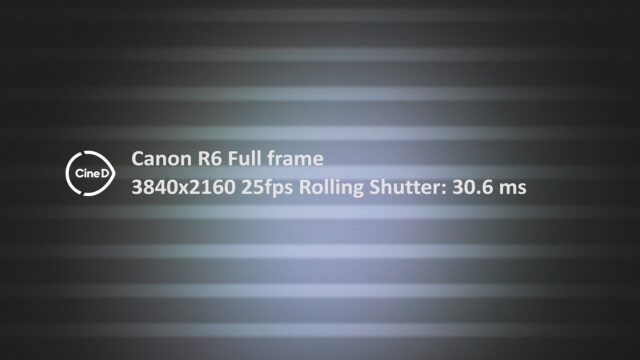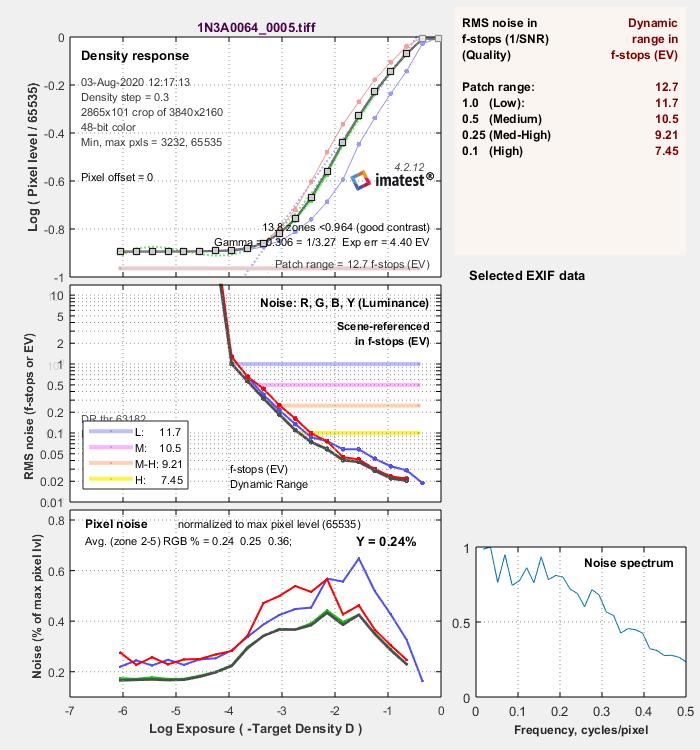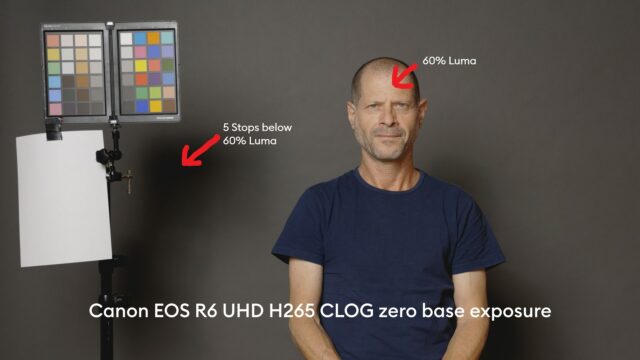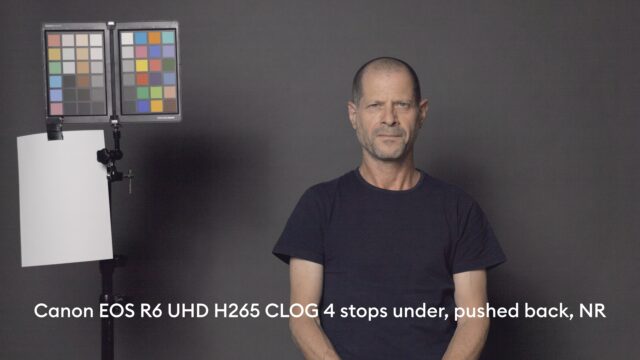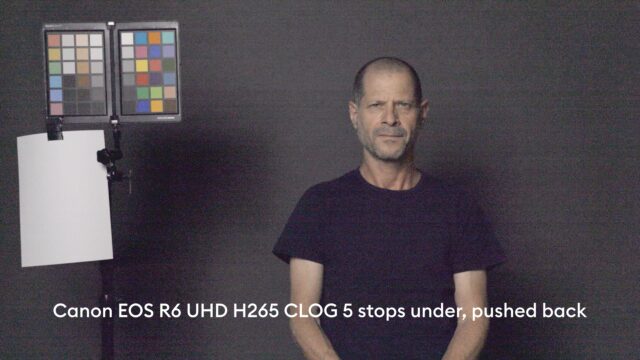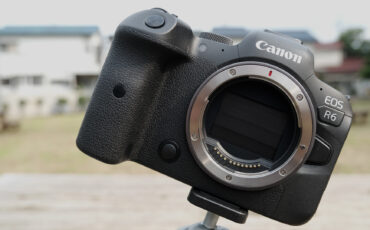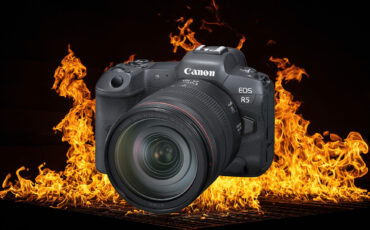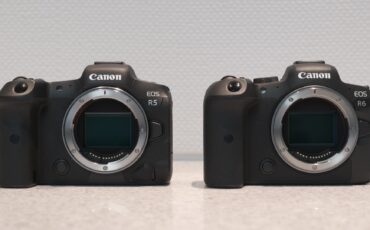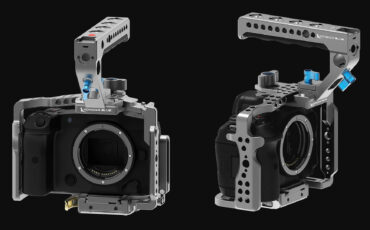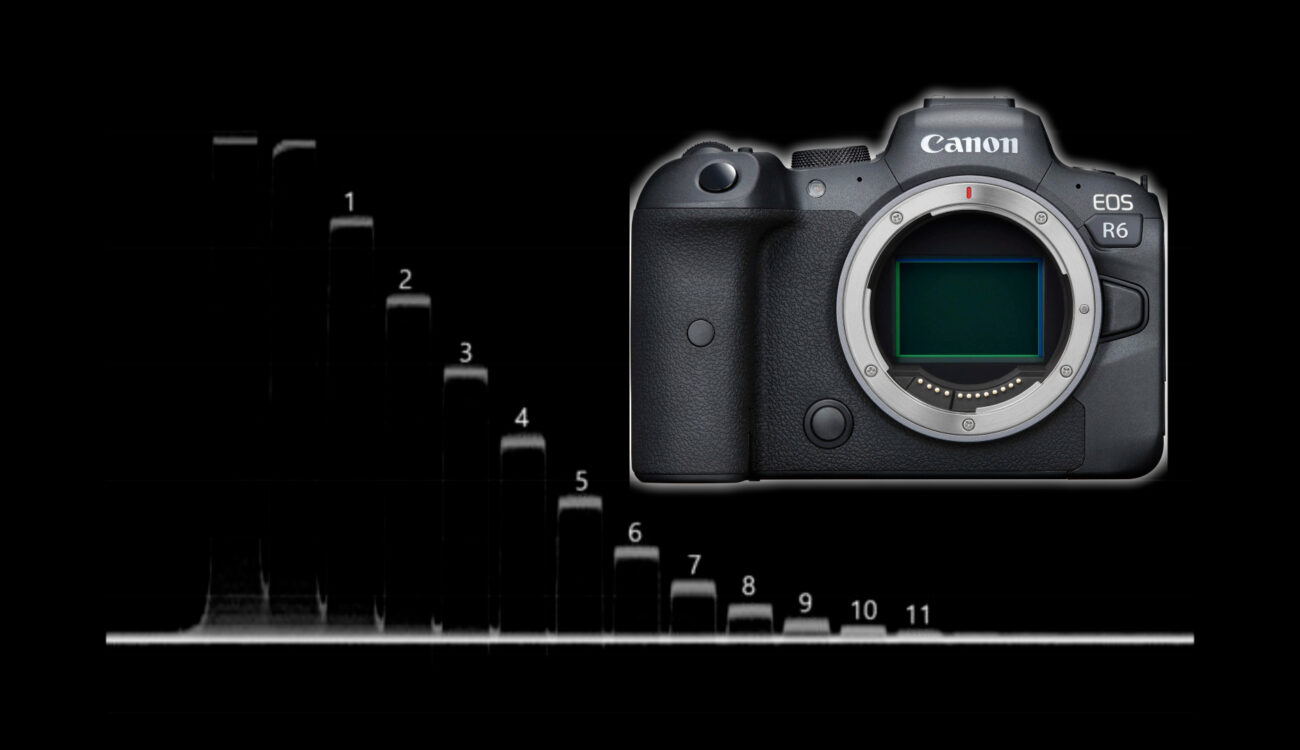
Looking at the specifications of the Canon EOS R6 camera, it sports 4:2:2 10 bit video recording with a 20.1 Megapixel full frame sensor – hence, big pixels and thereby very promising in terms of image quality and dynamic range. Does it live up to this expectation? Read on!
Despite the overheating limitations, which have been partially improved with the latest firmware, the Canon EOS R6 delivers a beautiful image – as you can see in this review by my colleague Johnnie.
Looking at competing offerings in the market of full frame cameras, the Canon EOS R6 falls into a similar price bucket as the Panasonic S1 (considering the additional cost of the VLOG upgrade). The SIGMA fp is even less expensive, similar to the Panasonic S5 – all of which we have tested at CineD recently (click the link on each camera to see the respective article).
So, let’s take a look at what the Canon EOS R6 brings to the table – also in comparison to the cameras mentioned above. Firmware version for this Canon EOS R6 lab test is 1.0.
Canon EOS R6 – Rolling Shutter
As usual, we use our 300Hz strobe light to record the pairs of black & white bars that appear due to the read out nature of CMOS sensors. Analysing these, the rolling shutter of the Canon EOS R6 in full frame UHD 25fps turns out to be 30.6ms.
30.6ms in full frame UHD is the second highest value ever measured in our lab (only the Z Cam E2C with a MFT sensor had a higher value) – the higher the value, the more pronouced are rolling shutter artefacts. At least the Canon EOS R6 features IBIS (in body sensor stabilization), so to an extent, the bad rolling shutter is mitigated.
In UHD 50fps full frame mode, the camera shows 15.3ms – hence, some subsampling seems to be happening to allow for 50 frames per second.
In crop mode (1.6x), at 25fps the Canon EOS R6 exhibits 20.3ms rolling shutter – on the high end for a Super 35 sampling. In 50fps crop mode, a similar value to the result in full frame 50fps is obtained – 15.3ms.
Canon EOS R6 – Dynamic Range
As usual, please click here to see how we perform dynamic range tests.
Let’s have a look at the waveform first for full frame, UHD 25fps, C-LOG (Canon Log 1), ISO400, internal 10 bit 4:2:2 H265 recording. Here we find about 11 visible stops, and an almost invisible hint of a 12th stop inside the noise floor.
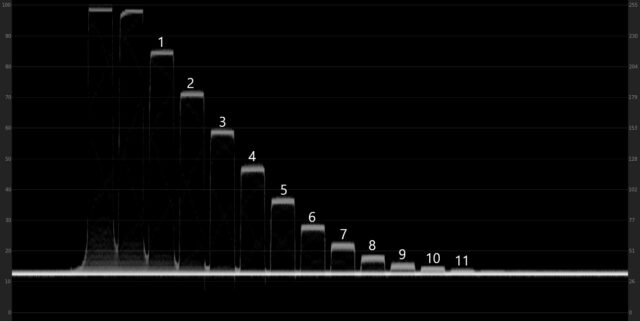
What can be observed is the fact that almost no noise floor is visible – it looks like lower stops are simply cut off.
Hence, it will not be possible to dig into the shadows much without losing color and creating banding – confirmed by our latitude (underexposure) test in the subsequent section below.
IMATEST calculates 10.5 stops at SNR = 2, see the result below. The total patch range identified is 12.7 stops.
So, we are getting a very simple summary: the Canon EOS R6 shows the highest rolling shutter and the lowest dynamic range of any full frame camera we have tested so far.
The Panasonic S1 and S5 both exhibit a tad above 12 stops of dynamic range (for a signal to noise ratio of 2) and both have a rolling shutter value of 22ms and 21ms respectively, whereas the SIGMA fp shows 20.8ms rolling shutter and a dynamic range reading of 11.3 (at SNR = 2).
Canon EOS R6 – Latitude (Underexposure) Test
As usual, for our underexposure test, we arrange the scene in such a way that Johnnie’s face is exposed at a maximum luma value of 60% (using a waveform monitor). This gives a base exposure of F4 at 1/25s shutter at ISO 400 using C-LOG.
Then, we successively reduce the shutter value to 1/50s, 1/100s, 1/200s, 1/400s and 1/800s giving 5 stops of underexposure.
Our standard scene is arranged so that the shadow behind the Datacolor color checker is 5 stops below the luma value on Johnnie’s face.
So, let’s have a look at 3 stops of underexposure:
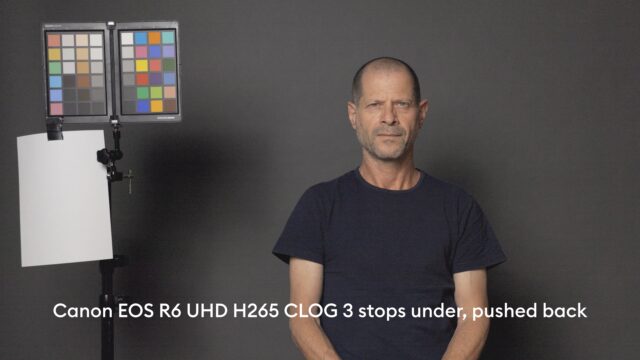
For 3 stops of underexposure, pushed back to zero, the image is still usable, however, noise starts to kick in which can be removed by noise reduction (see the slide below).
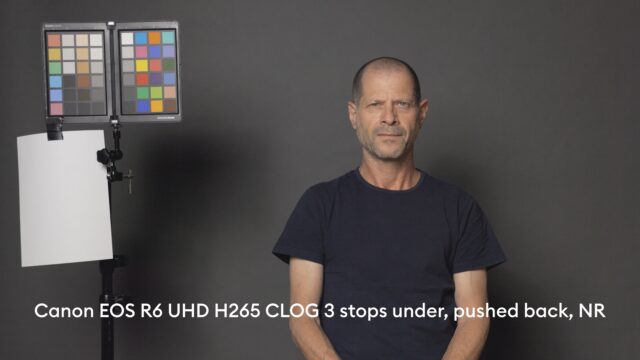
As can be seen above, the noise can be effectively removed by noise reduction (Using DaVinci Resolve 16.2.7).
At 4 stops of underexposure, pushed back, the limits are reached (see below slide):
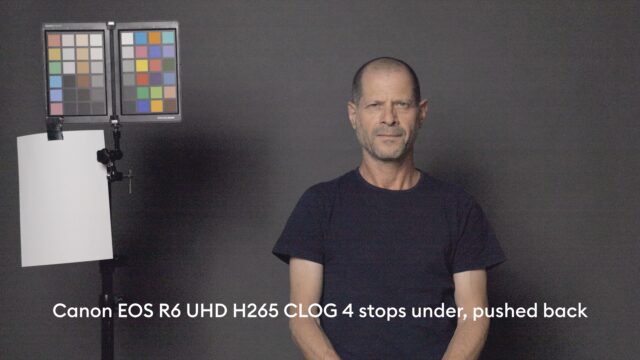
Horizontal stripes start to appear in the image, and the noise becomes excessive. However, it is finely dispersed, so noise reduction again can help a bit – you can get away with this image. Also, colors start to fade from the image and banding becomes visible – transitions from brighter parts of the image to darker areas show stepwise transitions – which are dithered by the noise.
Looking at the waveform plot in the section above, this behaviour was expected. The 60% luma value represents stop 3, the shadow area is 5 stops below that at stop 8. Now, underexposing 4 stops pushes the shadows to stop 12 – which shows basically no code value difference to stop 11 – hence banding has to occur.
And finally, just for reference, a 5 stops underexposed image, pushed back to zero. Noise reduction does not help at this point.
Summary
When the Canon EOS R5 (see our lab test here) and EOS R6 were announced a while back, I thought that the EOS R6 should be the better choice for video – boasting a lower resolution with a 20.1 mega large pixel sensor.
The opposite has happened in this case. The Canon EOS R6 has the highest rolling shutter and lowest dynamic range of all the full frame cameras we tested so far.
In the underexposure test, the Canon EOS R6 behaves as expected. 3 stops underexposure is possible, and with some noise reduction applied, 4 stops. This is not so bad, and can be attributed to the pleasing nature of the noise (a very fine grain), which helps to hide banding and looks quite good.
Last but not least, please allow me to remind everybody again that dynamic range and rolling shutter are just some of the pieces of the puzzle, when comparing cameras. Color science, usability, weather sealing, overheating and more can be more important to get the shot you need and the job done. All recent cameras, including the Canon EOS R6, have enough dynamic range to shoot beautiful images – and at the end, it is the person behind the camera who shoots the film and not the camera… ;-)
Have you worked with the Canon EOS R6 already? What are your experiences with the camera? Please share with us your thoughts in the comment section below.
